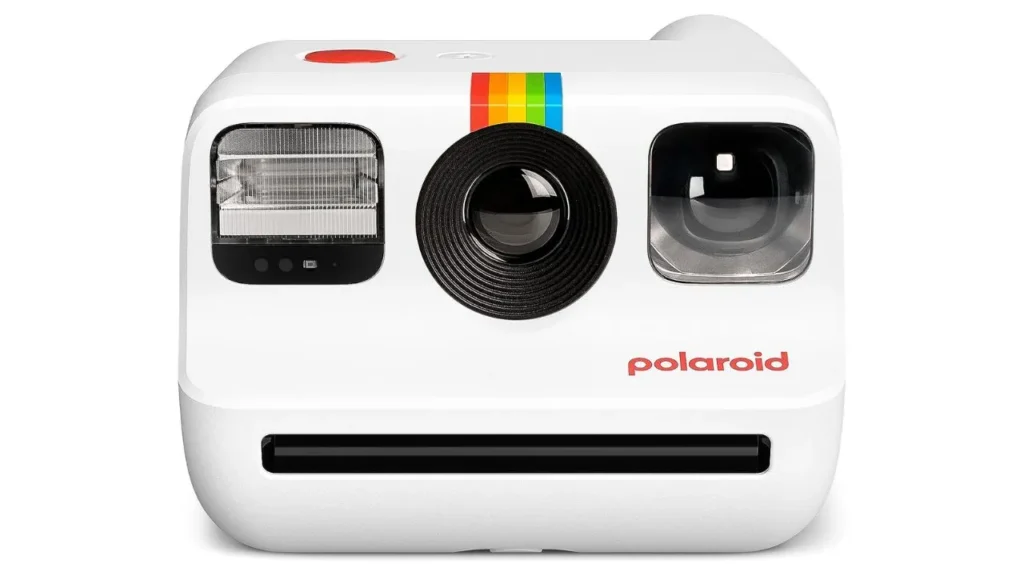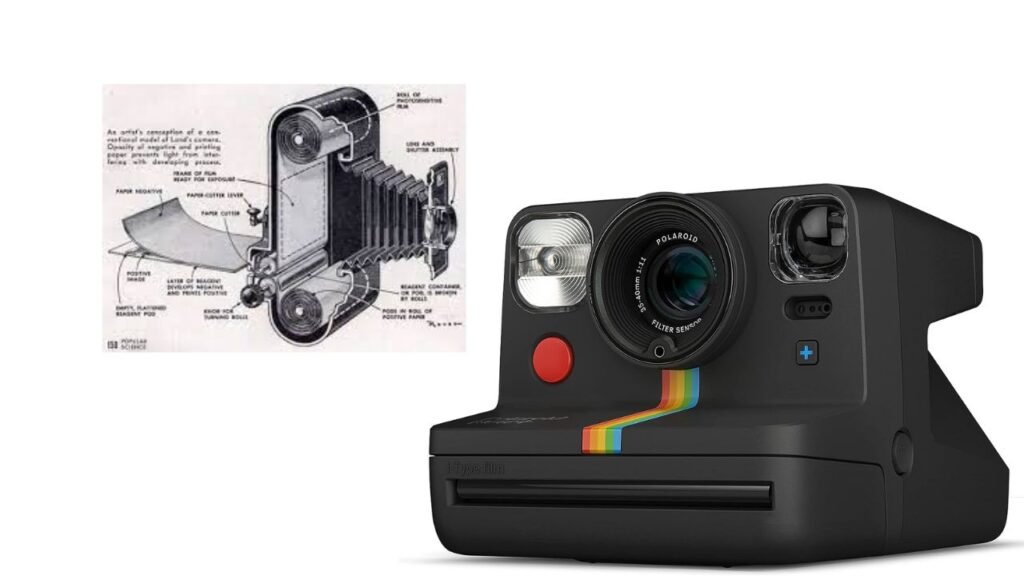Embark on a captivating exploration of the art and craft of Polaroid photography as we delve into the intricacies of using a Polaroid camera. In this comprehensive guide, we will navigate the essential steps and techniques, ensuring that you not only capture moments but also create lasting, tangible memories. From the fundamentals of loading film to mastering exposure, join us on a journey that combines technical precision with creative expression. Whether you’re a novice or a seasoned enthusiast, this article is your gateway to harnessing the full potential of your Polaroid camera. Let’s unravel the secrets behind the iconic instant prints and elevate your photography experience.
What is a Polaroid Camera

A Polaroid camera, named after the renowned brand that popularised instant photography, is a type of camera that allows users to capture and develop physical photographs on the spot. Invented by Edwin Land in 1947, Polaroid cameras gained widespread popularity in the mid-20th century for their groundbreaking technology that eliminated the need for traditional film processing. Unlike conventional cameras that require film to be sent to a lab for development, a Polaroid camera incorporates self-developing film, enabling users to witness the magic of an image appearing within minutes of capturing the shot.
These cameras work on the principle of integral film, where the film contains layers of chemicals that react to light exposure. When a photo is taken, the film is ejected from the camera, and the developing process begins. The chemicals spread across the film, producing a visible image without the need for external processing. While the digital age has transformed the landscape of photography, Polaroid cameras remain cherished for their nostalgic appeal, providing a tangible and instantaneous experience in a world dominated by digital pixels and screens.
10 Steps To Use a Polaroid Camera
Here are some easy steps to use a Polaroid camera
Choose the Right Film
The heart of any Polaroid camera is its film. Ensure you have a compatible film for your specific model. Different films may produce variations in colour, contrast, and texture, so experiment with different types to find your preferred style.
Load the Film
Loading film into a Polaroid camera may seem straightforward, but it’s crucial to do it correctly to avoid damaging the film or camera. Follow the instructions provided with your film and camera for a seamless loading process.
Understand the Viewfinder
Polaroid cameras often have a separate viewfinder, and it’s essential to get familiar with it. Use it to frame your shots accurately, taking into account the parallax effect that may occur between the viewfinder and the lens.
Master the Focus
Some Polaroid cameras come with manual focus settings, while others have fixed focus. Learn how to adjust the focus on your camera to ensure your images are sharp and clear.
Mind the Exposure
Polaroid film is sensitive to light, so understanding exposure is crucial. Many Polaroid cameras have exposure compensation features, allowing you to adjust for different lighting conditions. Experiment with these settings to achieve the desired results.
Get Creative with Composition
Despite the limitations of instant photography, there’s still room for creativity in composition. Experiment with angles, framing, and perspective to add a personal touch to your Polaroid captures.
Embrace the Element of Surprise
One of the charms of Polaroid photography is the element of surprise. Since you can’t review and retake shots instantly, embrace imperfections and unexpected outcomes as part of the unique charm of Polaroid photography.
Allow Time for Development
Once you’ve taken a shot, resist the temptation to shake the photo (a common misconception). Instead, let it develop naturally. The development time may vary depending on the film type and environmental conditions.
Protect Your Prints
Polaroid prints are delicate, so handle them with care. Shield them from direct sunlight during development, and consider storing them in an album or protective sleeves to prevent damage over time.
Share the Joy
The joy of Polaroid photography is only complete once you share your creations. Give prints to friends, create a Polaroid wall, or start a scrapbook. The tangible nature of Polaroid prints makes them perfect for sharing and creating lasting memories.
When Was the Polaroid Camera Invented

| Inventor | Date of Invention |
| Edwin Land | 1947 |
Edwin Land introduced the Polaroid camera in 1947 with the unveiling of the Polaroid Land Camera Model 95. This invention marked a revolutionary shift in photography, as it eliminated the need for traditional film processing, allowing users to capture and witness the development of instant photographs within minutes. Land’s visionary creation not only simplified the photographic process but also made photography more accessible and immediate, leaving an enduring legacy in the world of imaging.
How to Work a Polaroid Camera
Selecting and Loading the Film:
Begin by ensuring you have the appropriate film for your Polaroid camera model. Carefully follow the manufacturer’s instructions to load the film correctly. This initial step is crucial for a smooth and error-free photography session.
Mastering the Viewfinder:
Polaroid cameras typically have a separate viewfinder, and understanding its nuances is essential. Familiarise yourself with the viewfinder to accurately frame your shots, taking into consideration any parallax effects that may occur between the viewfinder and the camera lens.
Navigating the Focus:
Whether your Polaroid camera has manual focus settings or fixed focus, understanding and mastering the focus mechanism is paramount. Adjust the focus to ensure your images are clear and sharp, enhancing the overall quality of your instant prints.
Controlling Exposure:
Effective exposure control is vital for achieving well-balanced and visually appealing photographs. Many Polaroid cameras provide exposure compensation features, allowing you to adapt to different lighting conditions. Experiment with these settings to optimize your image exposure.
Patience in Development:
After capturing a shot:
- Resist the temptation to shake the film—a common misconception.
- Allow the film to develop naturally, adhering to the specified development time.
- Embrace the unique and unpredictable nature of Polaroid photography, where each print is a tangible surprise.
Read More :
When Were Security Cameras Invented? Step-by-Step Guide
Keilini Light Bulb Security Camera: Latest Guide in 2024
What is the Best Polaroid Camera
Pricing Overview:
The cost of a Polaroid camera ranges from $100 to $400, depending on the model and features, with entry-level options starting around $100 and premium models reaching $400 or more.
Film Expense:
Factor in the ongoing cost of film, which typically ranges from $15 to $30 per pack, as each pack contains a limited number of exposures.
| Camera Model | Price Range | Key Features |
| Polaroid Now | $100 – $150 | Basic features, automatic exposure, built-in flash |
| Polaroid Now+ | $150 – $200 | Manual focus control, double exposure capabilities |
| Polaroid SX-70 | $200 – $400 (or more) | Premium model, advanced features, classic design |
| Refurbished/Vintage | Varies | Budget-friendly options with potential collectible value |
Conclusion
In conclusion, this comprehensive guide has illuminated the fascinating world of Polaroid photography, from the historic inception by Edwin Land in 1947 to the intricate steps of capturing and developing instant prints. Whether you’re a newcomer eager to explore the nuances of loading film and mastering exposure or a seasoned enthusiast looking to elevate your creative expression, these insights provide a roadmap for an enriching photographic journey. The enduring charm of Polaroid cameras lies not only in their technical capabilities but also in the tangible joy of creating lasting memories instantly. As you embark on your Polaroid adventures, may each click serve as a testament to the timeless allure of capturing moments in the blink of an eye.
